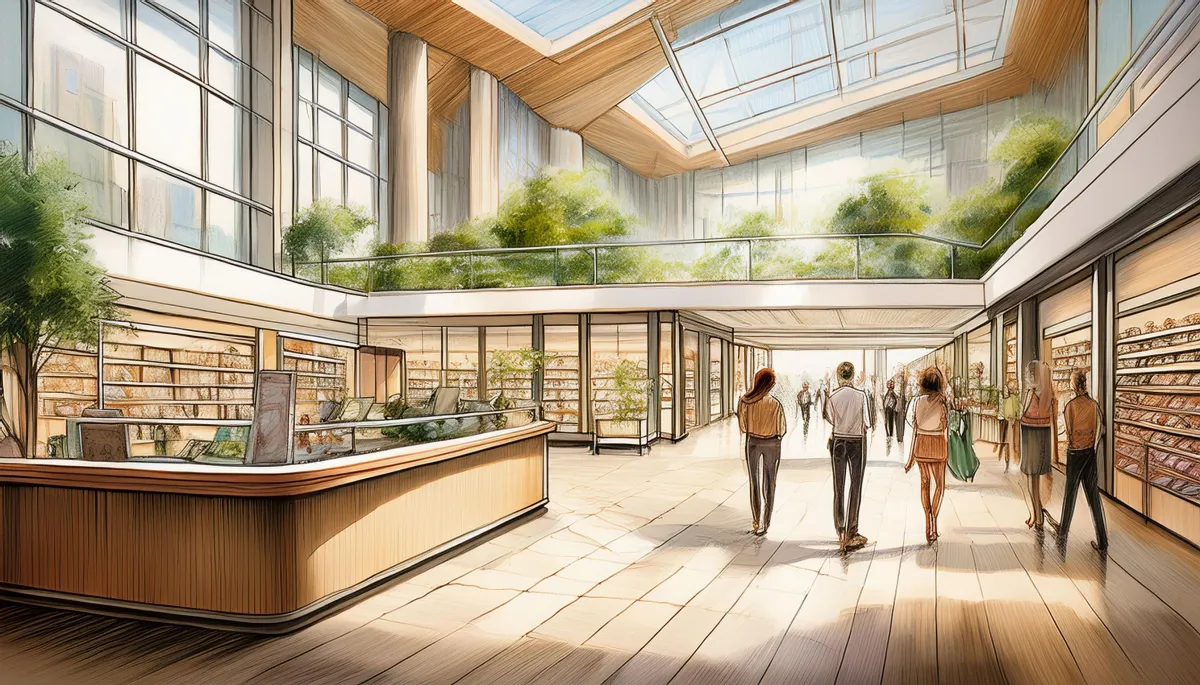
The Calm Store: Designing for a Tired Consumer
The Age of Overstimulation
Walk into almost any store today, and it feels like sensory overload. Bright lights, loud music, motion displays, competing signage—all designed to keep you moving, reacting, buying. For a long time, that worked. Retail was built on stimulation. The more things happening, the more opportunities to convert attention into sales.
But somewhere along the way, that logic started to break. The modern consumer isn’t energized by constant input. They’re exhausted by it. After years of living inside glowing rectangles, being followed by notifications, and scrolling through endless feeds, people are now seeking something much rarer: quiet.
In 2025, that craving for calm has become one of retail’s strongest undercurrents. Consumers are no longer just shopping for products—they’re looking for a feeling. And the brands earning loyalty today are those that design for emotional rest as much as visual impact.
Less Noise, More Noticing
The new frontier in retail experience isn’t about doing more. It’s about doing less, better. Calm design isn’t about minimalism as an aesthetic choice—it’s about removing friction so that attention can breathe.
When a store dials back the noise, people notice details again. The texture of a material. The warmth of lighting. The sound of real conversation instead of preprogrammed playlists. These are not nostalgic touches; they are trust cues. They remind customers that behind every product is intention, not automation.
Brands like Aesop, Muji, and Lululemon have been quietly modeling this for years. Their stores use neutral palettes, natural materials, and deliberate pacing. They don’t shout their presence. They invite discovery. Every inch of space communicates restraint—and that restraint feels refreshing in a retail world built to overwhelm.
Even tech-forward retailers are leaning into this philosophy. Apple’s newer smaller-format stores, designed around collaboration tables instead of product walls, feel less like showrooms and more like shared studios. The result is human-scale engagement: fewer distractions, more dialogue.

The Store as Sanctuary
Retail used to mirror the chaos of the market. Today, it’s becoming the antidote to it. In cities where overstimulation defines daily life, calm retail environments offer something deeply valuable—a sense of pause.
Wellness has already moved from category to principle. We see it in food, fashion, and even finance. The next evolution is spatial wellness: designing physical spaces that calm the mind and regulate attention. The same psychological research that drives meditation app interfaces or workplace architecture now guides retail floor plans.
A store that feels balanced doesn’t just look good—it performs better. Studies have shown that environments that reduce cognitive load increase dwell time and spending. When people aren’t forced to filter constant noise, they make more deliberate choices. They also tend to feel more satisfied afterward, which builds the kind of memory that drives repeat visits.
Emotional ROI
There’s an economy of feeling at play in modern retail. The return on experience is no longer measured by foot traffic or transaction volume alone, but by emotional retention—how a space makes someone feel after they leave.
Calm design signals confidence. It tells a customer, “We don’t need to fight for your attention; we’ve earned your trust.” It replaces urgency with assurance. When shoppers sense that a brand values their mental bandwidth, it becomes more than a store—it becomes a respite.
Even digital-first brands are adopting this mindset. Shopify’s physical experiments, for instance, focus on tactile storytelling over product density. Patagonia’s minimalist store design reinforces its environmental ethos. The common thread is clarity: everything in the space has purpose.
From Retail to Everything Else
The logic of calm design extends well beyond physical stores. Every digital experience, customer touchpoint, or marketing campaign now faces the same test: is this helping someone focus, or adding to their fatigue?
A cluttered website is the digital version of a chaotic store. Overpersonalized emails feel like noise, not care. When brands apply the same discipline to their digital ecosystems that they bring to in-store design—editing, simplifying, slowing down—they cultivate coherence across every channel.
This kind of consistency builds emotional trust. Customers begin to associate the brand with clarity and control, a rare feeling in an age of constant alerts and algorithmic churn.
Designing for Depth, Not Distraction
In the past, retail design was a race for attention. Now it’s a study in meaning. The best spaces don’t try to overwhelm visitors; they orient them.
A well-designed store unfolds like a story. The entry welcomes. The center engages. The exit reinforces. Each step reveals a new layer of understanding rather than more noise. When layout, lighting, and language work together to reduce mental friction, they turn shopping into reflection.
That’s why brands like Eileen Fisher and COS are investing in architectural storytelling—spaces that communicate values through rhythm and restraint. The lesson is simple: people don’t remember everything they saw in a store. They remember how the store made them feel about themselves.
The Future of Retail Calm
As 2025 heads into its final quarter, the smartest retailers are treating calm as a competitive advantage. The trend is not about silence—it’s about signal. When everyone else is trying to speak louder, stillness becomes differentiation.
Designing for calm doesn’t mean losing energy or excitement. It means channeling it with intention. A store can still be vibrant, dynamic, even playful—so long as it respects the customer’s capacity to process.
The physical store, once seen as a liability in an era of e-commerce, is being reimagined as an emotional asset. It gives customers what digital cannot: a moment to pause, a space to belong, and a feeling to take with them.
Because when everything else feels rushed, the brand that slows you down stands out.
